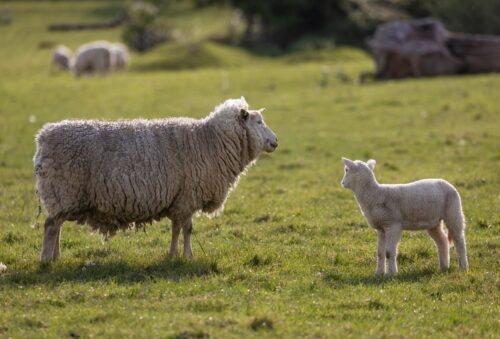Sheep genomics reveals insight into ancient sheep domestication and human migration. From Scope, the blog of the Yale Scientific Magazine.
For thousands of years, civilization and the domestication of animals have been intertwined. One such case involves sheep, which humans have used as a source of wool, milk, and meat for over eleven millennia. A study conducted by an interdisciplinary research group across Eurasia, published in Science, analyzed the complete sets of genes, or the genomes, of ancient domesticated sheep from early civilizations. From genomic analysis, the researchers found parallels between ancient sheep genomes and the migration and cultural development of humans.
In the study, Kevin Daly, Ad Astra assistant professor at University College Dublin and first author of the research article, obtained and sequenced many of the 118 genomes recovered from ancient sheep remains ranging from Mongolia to Ireland. The evidence suggests that eight thousand years ago, in the earliest European sheep population, herders deliberately selected sheep with uniquely colored coats. Such herding preference is linked to changes near the corresponding KIT gene within the sheep population, which plays a role in sheep coat color and is an example of the impact humans have had on domesticated livestock. “[Humans have] been interacting with livestock, and when you extend that to thousands of years […] we start changing their genetic makeup,” Daly said.
Additionally, since sheepherders migrate with their livestock, human migrational patterns were suggested from the collected data. The study suggests sheep moved with humans beyond the Fertile Crescent eight thousand years ago, and pastoralists from the Eurasian steppes began their westward migration five thousand years ago. The genomic study further supported previously studied cultural changes introduced as a result of migration, such as the introduction of the Indo-European language to Europe and a change in the ancestry of British people due to new populations that likely brought their sheep with them.
Daly shared the difficulties of the data collection and handling of ancient remains. Extracting genetic material from bones as old as eleven thousand years yields little DNA. The resulting DNA also had to be validated for the original species, as the genome degrades over time.
These hindrances were overcome, in part, due to the diverse team of researchers involved in the study. In particular, researchers in archaeology, zoology, genomic biology, and more disciplines worked together to elucidate the history of humans and sheep. “[Our collaboration helped] get the most complete understanding of the overall story,” Daly said. Understanding ancient domesticated sheep through only one field leaves out much of the rich history that could be elucidated from the same data, thereby highlighting the value of interdisciplinary work.
Although the large team, spread across Eurasia, had many difficulties including language, time, and location differences, the diverse academic and cultural backgrounds ensured the broader implications were seen. The large-scale project covered an enormous area across Eurasia, interpreting the results through an international frame. As a result, more could be found from the data about the various regional implications of sheep migration and evolution. Daly and his team plan to continue investigating the history of domesticated sheep and humans in more focused regions. Through this, Daly hopes the implications of the research can be better revealed. “I hope people are reminded about the scale of […] our history we have shared with other species,” Daly said.

